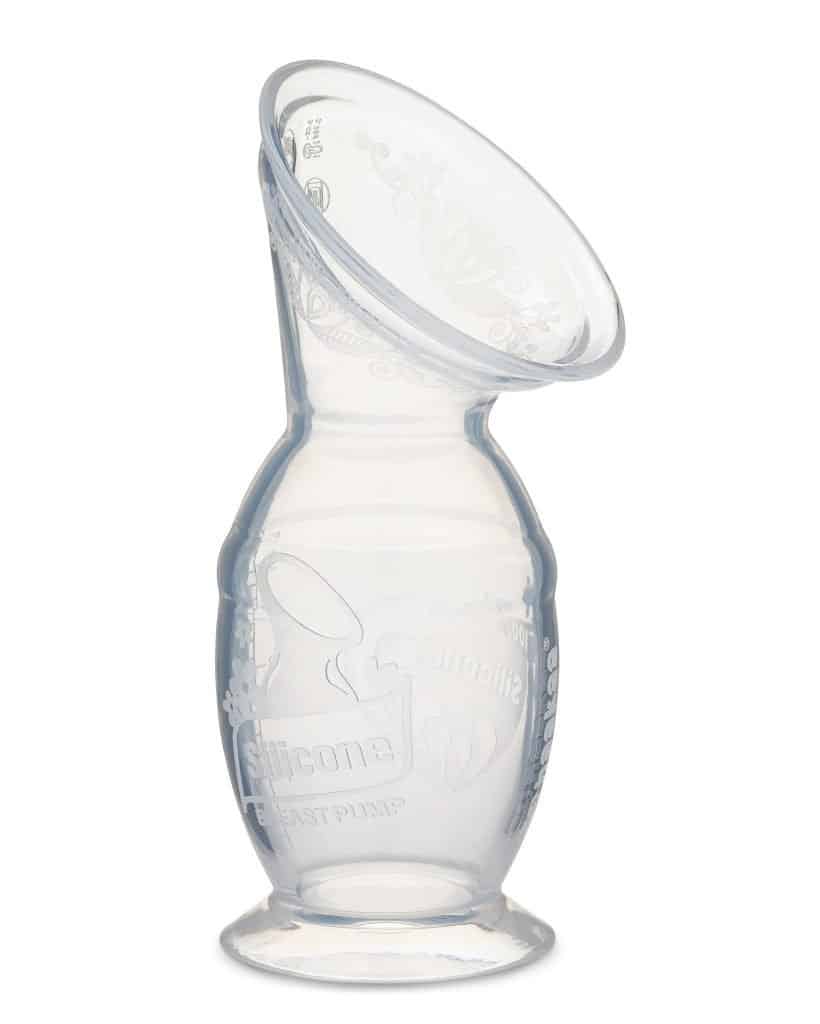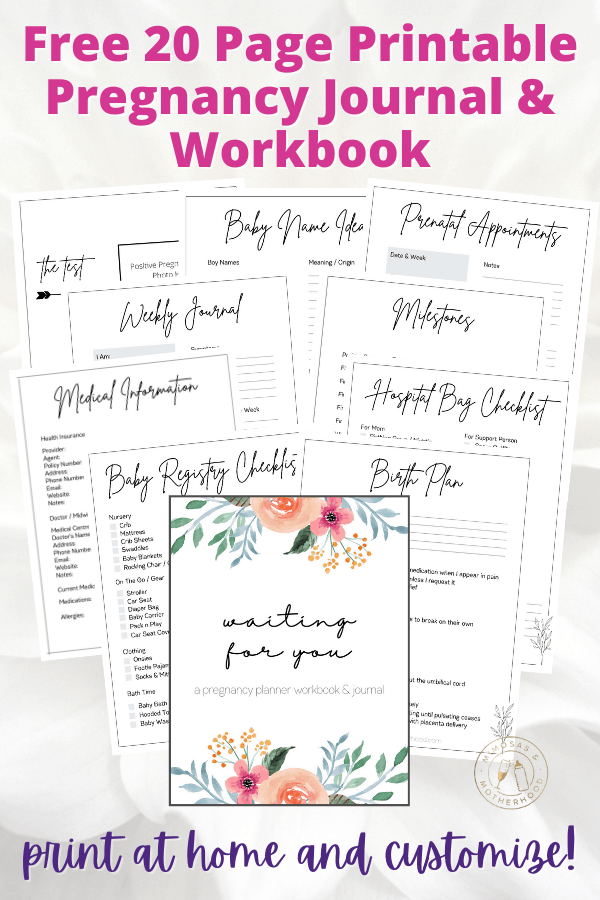How to Use Vibration, Like an Electric Toothbrush for a Clogged Milk Duct
If you’re a breastfeeding mama, there’s a good chance you’ll deal with a blocked or clogged milk duct. They’re one of the most common problems during breastfeeding, and while they can be uncomfortable (and even a little painful), don’t panic! Using vibration, like an electric toothbrush for a clogged milk duct, is one of the many things that can help.

What is a clogged or blocked milk duct?
Your breastmilk flows through your breasts in an intricate pipe-like system of channels called ducts. Clogged or blocked milk ducts are hard, tender lumps that form in these milk ducts of the breast. These lumps (or clogs) prevent the flow of breast milk, and are one of the most common problems breastfeeding mamas face!
These lumps can cause redness, swelling and pain in the area of the breast where they develop. They might even feel warm or tender when you touch them.
Note: Some links may be affiliate links. That means I may make a commission if you use my links to purchase, at no extra added cost to you! I only recommend products that I personally love and believe in. Full disclaimer here.
Related: Breastfeeding Tips for First Time Moms
What causes a plugged duct?
Clogged milk ducts are super common, and honestly super frustrating. I navigated clog ducts multiple times on both of my breastfeeding journeys!
Clogged ducts are caused by a few different things:
Incorrect latch: If your baby is having trouble latching onto your breast or sucking, it can cause him to take in less milk. When milk is left behind, it can cause blockages.
Breast engorgement: It’s easy to miss or skip pumping or feeding sessions sometimes (like when your baby finally sleeps through the night and you are so exhausted you do too). However, when breast milk builds up in your breasts and you wait too long to release it, that can also cause blocked milk ducts.
Overproduction: If your breasts produce too much milk, it can lead to engorgement easily, which can also lead to plugged ducts.
Too much pressure on your breasts: A bra or top that is too tight or has underwire while you are breastfeeding can put too much pressure on your breast tissue and restrict the flow of milk, leading to clogged milk ducts. This can even be caused by the straps of your diaper bag!
Fatigue and Dehydration: Your body needs rest and fluids! If it isn’t getting enough of either, you are at greater risk for developing clogged ducts.

What does a plugged duct feel like?
The first thing I felt with a plugged milk duct was a small, hard lump in my breast. It was sore and painful when I touched it, and my breast looked red. It was oddly also a little bit warm to the touch!
For most women, they notice a hard area in their breast that might feel tender and hot to the touch. Their breast might look a little bit red in that area too. Another indicator is slower milk flow on one side, or a more painful let down.
Can you keep breastfeeding with a clogged duct?
One of the BEST ways to unclog a milk duct is to keep breastfeeding regularly, so yes, you absolutely should! While it might be uncomfortable, avoiding breastfeeding when you have a clogged duct might actually make the situation worse and compound the clog.
Offer your baby the impacted breast and try to be sure he drains it fully while nursing. If it becomes too uncomfortable or painful to nurse or pump, be sure to seek medical advice.
How to treat blocked ducts with vibration
Plugged milk ducts can be annoying, frustrating and a little painful. The good news is that most women can treat them at home!
When you start to suspect that you might be dealing with a blocked duct, the key is to act quickly before the clog gets worse. Using vibration, like an electric toothbrush for a clogged milk duct, is a great way to get your milk flowing again!
Your electric toothbrush can help with a blocked milk duct
I know, it sounds a little bit weird, but vibration can really help with a blocked milk duct! When it comes to vibration, you can use a personal vibrator/massager, or even an electric toothbrush for a clogged milk duct.
There are also massagers that are made specifically for helping to massage your breasts while breastfeeding! The LaVie Lactation Massager is amazing. I actually own one and love it. Their lactation massager is created with breast tissue in mind, is easy to hold, and is also waterproof (so you can massage your clogged ducts while the water from your shower helps to heat up the tissue.
LaVie offers multiple products made specifically for lactating mamas, and they’re all designed to help you on your breastfeeding journey. You can see all of the options they offer by clicking here. The original LaVie Lactation Massager is the one that I personally used.
Vibration helps when it comes to massaging away the blocked duct. Applying gentle pressure using a massager or electric toothbrush both before and after a feeding or pumping session can really help.
Some women might see noticeable relief in just one session, while for other women they might need to repeat it a few times before the blocked duct is totally resolved.
Using a massager/vibrator on a clogged milk duct
Trying vibration on a clogged milk duct? Here are a few steps to take to get the best result!
First, warm the breast, as applying heat can help to soften your breast tissue and get your milk flowing. You can try applying a warm, moist compress for 10 minutes, take a warm shower or try these microwavable breast heating pads (my personal favorite option).
Next, turn on the massager or toothbrush and gently press the widest part on your breast, starting with where you feel most engorged or notice a lump. If you are using an electric toothbrush for the clogged milk duct, you’ll want to use the handle part, laying on its side.
Move the vibrator from the tender or hard area towards your nipple for about 10 minutes. It might feel very tender, so only apply as much pressure as you feel comfortable with.
If you notice the plastic of the toothbrush base or the massager not gliding easily across your skin, you can use a nipple cream or other baby safe lubricant like coconut oil to help it move more easily.
Finally, be sure that you are emptying your breasts often and completely. After massaging the affected side, breastfeed or pump. You can use the electric toothbrush while doing this as well to help express the milk more thoroughly.
You can also use your hands to help compress your breast tissue and get as much milk out as possible.
Drink plenty of fluids, and be sure to rest so that your body can health itself. If needed, repeat this process every 2-3 hours until the blocked duct is resolved.
Related: The Best Breastfeeding Accessories
How to Fix a clogged milk duct: Other methods to try

Try dangle pumping or feeding to loosen the clog
First, you want to be sure that your baby is latching on correctly. Having the right information, and learning from a professional, is essential.
I highly recommend this online breastfeeding class by Stacey Stewart, a Certified Lactation Educator and breastfeeding mama. I took this class after giving birth to my second child, and was shocked by how much I learned!
My favorite part? It’s only $19! It’s such a crazy deal, and will save you so much heartache versus trying to figure things out on your own.
Click here check it out for yourself.
Your baby’s suck will be stronger at the beginning of a feeding, so while it might be tempting to give them the unaffected breast first because you’re in pain, don’t! Let that extra power help to remove the clogged milk.
Experiment with different breastfeeding positions that use gravity to drain more milk while nursing. Position yourself on all fours with your baby under you, or try to latch him so his chin and nose is towards the clog.
Switch it up while you breastfeed as well. Change breastfeeding positions regularly so all milk ducts get stimulated equally. Use your hands to help gentle express your milk after to be sure that your breast is empty.
Put Epsom salt in a Haakaa pump
If you haven’t used a Haakaa pump yet, let me tell you: they are AMAZING! A haakaa is a manual breast pump made of silicone… but it’s also so much more than a manual breast pump!

I used mine to catch let down while breastfeeding or pumping on one side, and saw a huge difference in the amount of milk I was able to get from my “lazy boob” (I know you all know what I’m talking about). I also discovered that a haakaa is an amazing tool for manually pumping through a clogged duct!
The gentle suction of the Haakaa, combined with the heat from warm water mixed with Epsom salts, can help you effectively and easily clear blocked and clogged milk ducts.
- First, fill the Haakaa with enough warm (not hot!) water to make contact with your nipple. Add 1-2 tablespoons of Epsom salts. I recommend using Epsom salts that don’t have any added perfumes, like this one.
- Attach your Haakaa to the affected breast for between 10-15 minutes. The combination of the Epsom salts, heat and suction will work to gently remove the clog.
- Repeat if needed every few hours for stubborn clogs.
Below is linked everything you need to do this!
The two Haakaa pumps linked are exactly the same, they just hold a different amounts of milk. For me personally, the 4oz Haakaa pump was perfect for the amount of milk I normally produced in a session.
Ask your partner to help you by sucking it out
I know, I know, this sounds a little crazy but: desperate times call for desperate measures! You might get to a point with your blocked milk duct that breastfeeding and pumping are a nightmare from the discomfort. Many women (including actress Kirsten Bell!) have shared that they’ve asked their partners for help in those moments!
Whatever works, right?
Apply heat while breastfeeding
Applying heat to the clogged area of your breast before a feeding or pumping session can help unclog the ducts. I personally loved using these Lansinoh microwavable heating pads that are made specifically for breastfeeding. I could even put them in my pumping bra during a session!

There are multiple options out there when it comes to heating pads you can use to warm up breasts. Many are made specifically for breastfeeding and pumping, like the ones below. I also love that most can be frozen as well! I kept the Lansinoh ones for heat, and kept the Thrive round pads in the freezer for when my nipples needed some extra relief.
You can also stand under a warm shower before and after breastfeeding or pumping. Let the water hit the spot where the clogged duct is.
What’s the difference between clogged milk ducts and mastitis?
Mastitis is what develops when a clogged milk duct isn’t treated correctly and continues to grow. Mastitis is a painful infection of the breast tissue, which most of the time requires medical treatment like antibiotics.
If your entire breast is tender, swollen or red, you develop a fever or you experience flu-like symptoms (like fatigue and body aches), you might be experiencing mastitis and should call your medical provider right away.
How long before plugged duct becomes mastitis?
Every woman is different, and every plugged duct is also different. There’s no across the board amount of time before a clogged milk duct turns into mastitis. As uncomfortable, or even painful, as your plugged duct might be, you want to act quickly to relieve it as soon as you notice symptoms to avoid the clog turning into mastitis.
What if I can’t get it unclogged?
If you aren’t able to get your breasts unclogged using an electric toothbrush for a clogged milk duct, try other techniques! Experiment with dangle pumping or feeding and other breastfeeding positions; use your haakaa to manually express your breast; ask your partner for help; and add extra pumping sessions.
If you still aren’t able to get your breast unclogged, reach out to your medical provider for advice and help.
When to see a doctor
It’s important to note that clogged ducts can vary greatly in severity from woman to woman. When treated quickly and correctly, a plugged milk duct usually begins to go away within a few days. Talk to your doctor or healthcare provider if the lump doesn’t go away within three days, gets bigger during that time, you’re experiencing significant discomfort or you develop a fever.
Left untreated, a clogged milk duct can turn into mastitis or a breast abscess, which is much worse and something you want to avoid.

Why do I keep getting clogged milk ducts?
If you find that you keep getting clogged milk ducts, the first thing that you want to look at is why it’s happening.
Some women may be more prone to blockages than others, and unfortunately there’s no surefire way to avoid them happening completely. However, there are plenty of steps you can take to lower your risk of continuing to get clogged milk ducts as much as possible.
How can I prevent clogged milk ducts in the future?
Breastfeed your baby often, or be sure that you are sticking to a frequent pumping schedule. You need to remove the milk in your breasts regularly and frequently to help it continue to flow easily and not get backed up in the ducts. Don’t wait too long between feedings or pumping sessions!
Your breast tissue is full of ducts, and they all need to be emptied on a regular basis. Change breastfeeding positions each time your baby nurses to help drain these different areas. If you are pumping, use your hands to help compress the breast tissue and express as much milk as possible.
Avoid clothing that is restrictive or too tight, or anything that puts unnecessary pressure on your breast tissue. Some people also swear by avoiding sleeping on your stomach! Make sure you drink plenty of fluids so that you are well hydrated, too.
If you are weaning your baby, try to do so gradually. Focus on dropping one feeding or pumping session at a time. This may mean that you need to express small amounts of breastmilk in between feedings to help to relieve engorgement. Remember that you are trying to reduce the amount of milk you have, so only express a little bit. If you are pumping, you can also focus on reducing the amount you are pumping gradually as well.
Finally, if you’re still struggling with getting clogged milk ducts frequently, make an appointment to see a lactation consultant. This could be a sign that your baby doesn’t have a good latch, and they can help!
Clogged milk ducts are painful and can turn into a serious infection. Even though it may seem odd to use something like an electric toothbrush to treat a blocked duct, it’s better than the alternative…
Clogged or plugged milk ducts are a normal (though very frustrating) part of breastfeeding for many women. The good news is that they’re easy to treat at home. Using vibration, like an electric toothbrush for a clogged milk duct, is one of the many things that can help!
Once you clear the clog, be sure to keep an eye on the area to make sure it doesn’t come back or get worse. Remember: if you notice flu-like symptoms, increased pain, swelling or redness, you want to call your doctor right away.








Thank you so much for this article! I am reading and using my electric toothbrush simultaneously! You have such good info here; and honestly I still need help with breastfeeding even with my third baby. It’s easy to forget all the ‘rules’! Ps. Where oh where did you get that darling black dress in your photo?
I’m so glad this is helpful for you! And you are so sweet. I found it on Amazon and it’s so soft and comfy! Here’s the link =) https://shopstyle.it/l/bAhvV